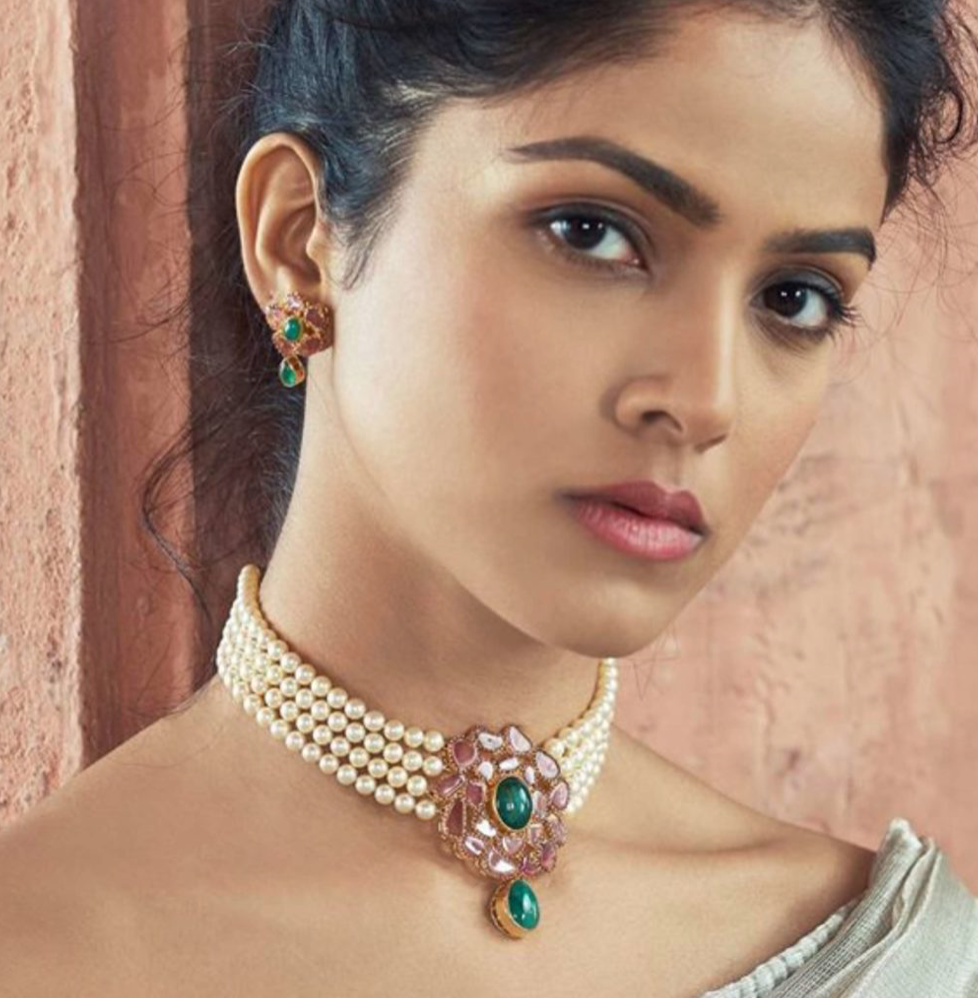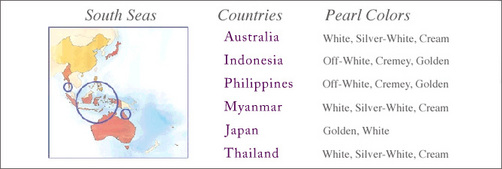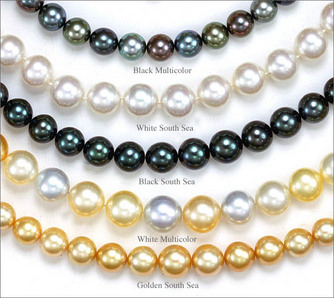South Sea Pearls
 South Sea Pearl Choker.
South Sea Pearl Choker.South Sea Pearls are known as the Queen of Gems and the gem of Queens. And Australia happens to supply some of the highest quality white South Sea pearls in the world. In the North West of Australia, in the warm waters off the coast of Broome, the Pinctada Maxima oyster produces these voluptuous, white pearls.
Feminine and warm, pearl connoisseurs go nacres about these types of pearls because while diamonds may be forever the white south sea Pearl is just so flattering to a woman's beauty.
Obscenely plump, these pearls come in extra-large sizes and a variety of shapes and colors. The chart below shows the wide range of shapes. As you move from left to right the pearls become less expensive.
How the Name - "South Sea Pearls" Originated
"South Seas" is a deceptive description in reference to those pearls farmed in the warm waters around Broome, in West Australia, where the finest white pearls in the world are produced because this geographical location is nowhere near the South Seas.
Australia is a gem paradise wonderland, both on and offshore and enviable host onshore to Gem Opals and Argyle Pink Diamonds !
The "south sea" misnomer can be traced back to the iconic founder of Mikimoto Pearls, Mr. Mikimoto (It is now argued that Mikimoto was not first to discover the pearl culturing technique).
Kokichi Mikimoto thought Broome in West Australia, might be a good location for pearl farming. Yep, he was right on the money there! You see, Mikimoto considered anything' south of Japan, as the "South Seas". And so that's how the name "South Seas Pearls came to be.
Mikimoto was responsible for perfecting the cultured pearling technique in Japan and then successfully marketing them to the world. Mikimoto changed the course of pearl history in developing the technique and then stamped his name onto Cultured Pearls in the process. There was now an affordable, yet realistic alternative to Rare Natural Pearls.
The Pearl Islands
The following are some of the world's finest producers:
( Autore Magazine, New World Order, author, date, unknown)
The Shades of Pinctada Maxima
The species of oysters and the environment in which they grow are the main factors behind determining a pearl's color and complexion. Australia Produces the Best White Sea Pearls in the World and that's exactly why Australia doesn't have much competition for their white cultured Pearls. They can ask whatever prices they want for these high-quality beauties.
This queen of gems is highly coveted for its rich varied colors. Pearls from the Pinctada Maxima oyster come in shades of white, ivory, silver, blue, yellow and rich gold.
Pearls from the Pinctada margaritifera oyster, referred to as Tahitian or Black Pearls come in the shades of aubergine, blue, green and grey, all with various hues. Very rarely ever true Black!
Every pearl reflects color in a different way, either boldly on the surface or hinting at color from underneath the nacre. This pearl quality is called Sheen and often displays beautiful iridescent overtones, oh baby - especially in the Pinks and Greens.
South Sea Pearl Sizes
The Pinctada maxima oyster is the largest species of pearl-producing oysters. Measured in millimeters, they range from 9 - 20+ mm with the majority falling within the range of 10 - 17 mm. Above 17 mm? That's a Pearl Orbcenity.
With this type of pearl, size matters and it matters a lot.. Indonesian, Myanmar Pearls and the Silver Lip of Tahiti are the largest species of mollusk capable of producing a Pearl.
In contrast, the Akoya oyster which produces the Japanese Akoya tops out at 10mm, the White Pearls from Australia, the black pearls from Tahiti (the primary island of French Polynesia) and the golden pearls from Indonesia and Myanmar have a minimum size of 10mm and a maximum of 20mm!
It is rare to find South Sea Pearls smaller than 10 mm and larger than 16 mm. Non-drilled keepsake pearls are also available in the marketplace. But they don't come cheap. One large, perfectly round gem quality South Sea Pearl of 12 millimeters can cost several thousand dollars.
Irregularly shaped baroque South Sea Pearls can reach sizes up to 40-mm or more.
All types of pearls are generally measured using what is called a milli gauge which can measure the pearl within 0.01m accuracy.
In recent years the market has seen an increase in sizes under 10mm. These smaller Pearls, 8 millimeter, and 9-millimeter Pearls are used in "baby south sea pearl necklaces." The comparison chart below shows the size range of white South Sea Pearls from Australia with Black Tahitian Pearls.
Return to the top of South Sea Pearls
Return to Cultured Pearls
Return to Antique Jewelry Investor Home Page




